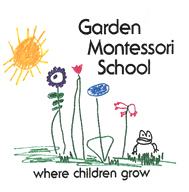Kindergarten Readiness
Parents often have questions about what is expected of children going into kindergarten. Programs differ by schools and by teachers.
Attached is a summary of the skills that we try to develop in our program. The success of a child entering school is not necessarily a factor of what he knows, but how he manages himself and how he approaches learning. Social and emotional skills facilitate learning. Not all children demonstrate proficiency in all areas, but there should be a trend of development. Many of these skills are a result of the home environment and emphasize the importance of spending time reading and talking to and with your child every day. Your child is only in preschool for 3 hours a day.
Our goal is not to “teach” your child what they will be learning in kindergarten. We try to enrich them and broaden their awareness of the world around them. The art, geography and science activities we have presented during the year provide the children with an awareness and a curiosity about a wide range of information. An awareness of phonics and the decimal system prepare them for the rote memorization that they will need over the next few years.
Kindergarten readiness is preparing a child for success in kindergarten.
GARDEN SCHOOL KINDERGARTEN READINESS GOALS
A child ready for kindergarten generally demonstrates self-control, confidence, a sense of order, independence, coordination and good concentration. Kindergarten readiness means being prepared for success in kindergarten.
SOCIAL AND EMOTIONAL DEVELOPMENT
Child understands cause and effect most of the time.
Child displays good self-esteem and confidence.
Child wants to be a good citizen. They are aware of right and wrong.
Child wants to be helpful.
Child cares for himself in dressing, toileting, bathing and eating most of the time.
Child adapts to rules, social conventions, and classroom transitions.
Child displays a positive attitude towards school.
Child is curious and industrious.
Child shows delight in accomplishments. Child is generally cheerful.
Child accepts clearly stated limits.
Child can handle disappointments relatively well. Child demonstrates follow through. They finish tasks and clean up.
Child does not habitually ask for help. Attempts tasks independently and can complete a task without teacher assistance.
Child self initiates activities.
Child can work or play independently and in groups.
Child plays “make believe”.
Child is generally courteous.
Child can play group games fairly, demonstrating an awareness of the rules.
Child is able to participate in problem solving discussions with peers.
Child displays empathy for another who is hurt or upset.
Child can articulate their feelings.
Child is self-confident in groups and independently.
Child gets along well with peers. Child maintains friendships.
Child has a good attention span.
• They can wait patiently during a boring activity for 15-20 minutes - doctor visit, shopping, etc.
• They can sit still and attend to one activity (not TV) a minimum of 20 minutes or more -story, art activity, puzzle.
Child has had exposure to drawing, singing, creative dramatics and movement activities.
Child has had a variety of outings - library, theater, airport, etc.
Child has “school skills” - standing in line, raising hand in class, waiting turn, etc.
Child has group listening skills. They participate in group discussions, listening to others, contributing and staying focused on the subject being discussed.
LARGE AND SMALL MOTOR SKILLS
Child can jump, hop, skip, gallop, catch and throw, pump on a swing, and climb.
Child has graceful movements and good balance. They walk without bumping things and carries objects without incident.
Child has good fine motor control: orthodox pencil grip, and good scissor skills.
LANGUAGE AND LITERARY SKILLS
Child expresses herself clearly, has very few or no speech difficulties.
Child has an interest in building vocabulary and in playing with words.
Child has an interest in reading and writing.
Child can tell a story - real or imaginary.
Child enjoys stories and can discuss them. Child has been read to frequently.
Child has had experience with patterning, rhyming, sorting and classification.
Child can distinguish both visual and auditory details easily.
Child can follow a series of 2-3 spoken directions.
Child reads and writes first name. Child recites first and last names.
Child identifies 10 + colors.
Child recognizes at least half of the alphabet from flash cards.
Child is aware of the sounds of letters as well as the names of letters.
Child has had experience in orienting left to right to facilitate reading and writing left to right.
MATHEMATICS AND SPATIAL ABILITIES
Child rote counts to 20 +.
Child reads and writes number symbols 1-10.
Child counts out 1-10 objects and can associate quantity with symbol.
Child is able to transfer his counting abilities to a variety of situations.
Child can count dissimilar or diverse objects and sets of objects.
Child has had exposure to the decimal system and understands that zero equals nothing.
Child is aware that numbers can be used to solve problems - addition, subtraction, multiplication and division.
Child identifies basic geometric shapes.
Garden Montessori School, Preschool, Danville, Ca.

